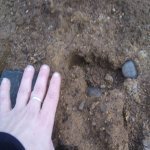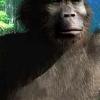Sorry Hunster - I have not been monitoring posts of late (competing hobbies have distracted me). I read with interest your quoted description of Zana. I had read it a couple of years ago, but as I learn more about the issue my perspective changes. Zana was special - her body (size/strength/speed) was outside the range of humans - not in the 99.9 percentile of humans , but beyond that - unlike anything ever known in terms of strength and speed.
I think you are on the right track regarding Denisovans. Species is the only designation that can be objectively described (and really only among living populations). Designation as to genus and higher classifications are purely subjective and exist only in the opinion of the "experts" (if anyone wants amplification of this I will try to provide it). Given the specific vs. generic distinctions, I have long felt that anthropologists tend to be splitters, that is that they emphasize morphologic differences at too high a classification level (like genus or family). I have felt that Denisovans and Neanderthals might really be found to be Homo sapiens (or a subspecies) if they were still extant and we could test that. I feel the same regarding Sasquatch/Bigfoot.
In answer to Sykes and others comparing a genotype to Ketchum's genotype I am relatively certain it hasn't been done (and if I am correct in that thinking then I am sure it won't be). A reasonable approach would be to add tentative Bigfoot genotypes to the GeneBank as X1078000, X1078001, or X1078002 for example, and then to compare future DNA samples against that genotype. If consistent matches were found, that would represent incontrovertible evidence for Sasquatch (or some other unknown primate - choose your name). That also will not be done (at least officially by Sykes or some other "respected" geneticist, but it could be done unofficially by NABS, Ketchum, or some other "unofficial' geneticist or group - but the results, even if earth shaking, would be ignored or criticized by academia).


